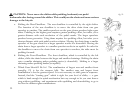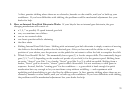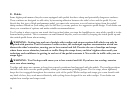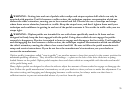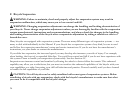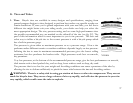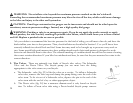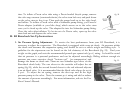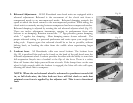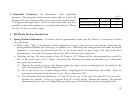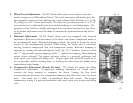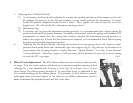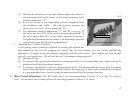
40
2. Rebound Adjustment. All K2 Razorback rear shock units are equipped with a
rebound adjustment. Rebound is the movement of the shock unit from a
compressed mode to an uncompressed mode. Rebound damping controls the
speed at which the shock returns to the uncompressed position. While riding, the
shock unit is constantly moving between compressed and non-compressed modes.
Rebound damping is adjusted by rotating the red rebound adjuster wheel (fig. 27).
There are twelve adjustment increments, ranging in performance from near
lockout to no damping. Rotation toward the “+” sign provides greater damping,
while “-“ applies less damping. More damping means slower rebound. The
proper rebound setting is a personal preference and varies upon your weight and
riding style. Experts agree that rebound should be as fast as possible, without
kicking back, or bucking the rider from the saddle when experiencing larger
bumps.
3. Lockout lever. All Razorbacks offer rear travel lockout. The lockout lever
(fig. 28) is anodized blue and can be found on the head of the pull shock near the
rebound adjustment wheel. Lockout provides the rider with the ability to turn their
full-suspension bicycle into a hardtail at the flip of the lever. There is a safety
blow-off feature that helps prevent blown air seals. If the bump force on the rear
wheel is high enough while the lockout is engaged, the blow-off valve will open,
allowing the shock unit to compress.
NOTE: When the red rebound wheel is advanced to positions towards full
in, or full clock-wise, the blue lock-out lever will feel slack or such that
minimal or no force is applied by the adjuster rod. This is not a functional
fault.
A
ir Spring
V
alve
Rebound Adjustment Wheel
Lockout
Fig. 26
Fig. 27
Fig. 28



